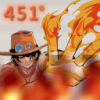Texture Maps / Coordinate Systems
I've got a problem I've been racking my brain over and I can't seem to figure it out. Say I have a polygon, and it's on a plane, and it has 4 vertices. Now, I have a texture as well. Now, I know already how to map a texture to the polygon itself. However, what I want to do is map it the other way around. Basically, if I click on a texture pixel, I want to know what the approximate point within the polygon that texture pixel will be applied to. Or simply put another way, I want to map the coordinates of the polygon to the texture.
The situation looks like this:
Non-rectangle 4 vertex Polygon P:
(x1,y1) ....... (x2,y2)
. .
. .
. .
. .
(x4,y4) ............ (x5,y5)
Texture T: (where width and height are in pixels and px & py is an arbitrary point)
1000 p
. . . . . . . . .
. .
. .(px,py) . 500 p
. .
. . . . . . . . .
So the idea is how can you figure out which coordinate pair on Polygon P do pixels px & py on the texture correspond to.
It's not quite the right approach for finding points within a polygon, but I think your not after that exactly. What sounds to be the right thing to research are the various interpolation methods - especially bilinear. Based on what you descibe as wanting to do, I think bilinear interpolation would help find a point within your polygon (assuming the 4 vertices are on the same plane), which you can then use to calculate the appropriate pixel of your texture... if I am following you that is :-) There were some recent topics on interpolation methods, so you should get some quick ideas from doing a search of reading back through the threads here.
Sorry I can't be of more help. Perhaps things will become clearer as the dialogue/thread continues.
hth
F451
Sorry I can't be of more help. Perhaps things will become clearer as the dialogue/thread continues.
hth
F451
Quote:Original post by Fahrenheit451
It's not quite the right approach for finding points within a polygon, but I think your not after that exactly. What sounds to be the right thing to research are the various interpolation methods - especially bilinear. Based on what you descibe as wanting to do, I think bilinear interpolation would help find a point within your polygon (assuming the 4 vertices are on the same plane), which you can then use to calculate the appropriate pixel of your texture... if I am following you that is :-) There were some recent topics on interpolation methods, so you should get some quick ideas from doing a search of reading back through the threads here.
Sorry I can't be of more help. Perhaps things will become clearer as the dialogue/thread continues.
hth
F451
Thank you for responding. I was looking into different interpolation methods, including anisotropic filters. I guess my issue is sort of like texture mapping in reverse, i'm mapping a polygon to a texture. Anyhow I suppose I'll just keep on searching and thinking about it, thanks again for the reply!
I fixed up your ASCII diagrams. You can use the < pre > < /pre > tags.
Non-rectangle 4 vertex Polygon P:
Texture T: (where width and height are in pixels and px & py is an arbitrary point)
Non-rectangle 4 vertex Polygon P:
(x1,y1) ....... (x2,y2) . . . . . . . .(x4,y4) ............ (x5,y5)Texture T: (where width and height are in pixels and px & py is an arbitrary point)
1000 p . . . . . . . . .. .. .(px,py) . 500 p. .. . . . . . . . .Quote:Original post by James Trotter
I fixed up your ASCII diagrams. You can use the < pre > < /pre > tags.
Non-rectangle 4 vertex Polygon P:
(x1,y1) ....... (x2,y2)
. .
. .
. .
. .
(x4,y4) ............ (x5,y5)
Texture T: (where width and height are in pixels and px & py is an arbitrary point)
1000 p
. . . . . . . . .
. .
. .(px,py) . 500 p
. .
. . . . . . . . .
Thank you :)
Quote:Original post by James Trotter
I fixed up your ASCII diagrams. You can use the < pre > < /pre > tags.
Non-rectangle 4 vertex Polygon P:(x1,y1) ....... (x2,y2) . . . . . . . .(x4,y4) ............ (x5,y5)
Texture T: (where width and height are in pixels and px & py is an arbitrary point)1000 p . . . . . . . . .. .. .(px,py) . 500 p. .. . . . . . . . .
Thank you :)
http://www.opengl.org/documentation/specs/version1.2/opengl1.2.1.pdf
Download that file. Read page 71. It explains how the formulae used in OpenGL to interpolate texture coordinates (and other things).
Download that file. Read page 71. It explains how the formulae used in OpenGL to interpolate texture coordinates (and other things).
This topic is closed to new replies.
Advertisement
Popular Topics
Advertisement




